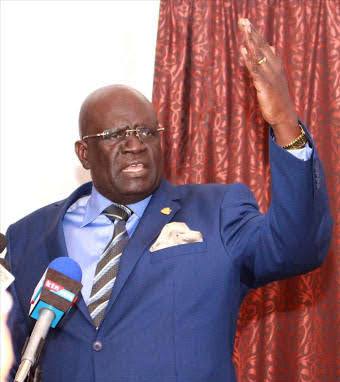Junior Secondary School- Selection, Subjects, Lessons, Requirements
Junior Secondary education in Kenya is completed in three years under the competency-based curriculum (CBC) system. Junior Secondary School, JSS, is from grade 7 to 9. CBC is the country’s education system introduced in December 2017.
Under the CBC system, each learner’s progress is monitored over a period of 2-6-3-3 years, evenly divided into three major levels of education:
- Early years education
- Middle school education
- Senior school, tertiary, and university education
__________________________________________
Also read;
Get all the News on Junior Secondary Schools here.
Education Ministry, TSC in a rush to prepare for learners in Junior Secondary (Grade 7)
CBC Junior Secondary Subjects (Grade 7, 8, 9)
__________________________________________
Under the CBC system, Junior Secondary is part of middle school. Learners in middle school transit from upper primary to junior secondary after a national examination. Junior secondary education serves as a bridge between primary and secondary school for students aged 12 to 14 years.
All junior secondary education activities are centred on age-appropriate education, student well-being and transition support for students.
There are core and optional (elective) subjects for students entering Grade seven, eight, and nine.
All learners in Junior secondary level must take the core subjects. They are as follows:
- English
- Swahili or Kenyan Sign Language
- Mathematics
- Integrated Science
- Health Education
- Pre-Technical and Pre-Career Education
- Social Studies
- Religious Education: learners choose one of the following: – Christian Religious Education – Islamic Religious Education – Hindu Religious Education
- Business Studies
- Agriculture
- Life Skills
- Sports and Physical Education
All the learners starting junior secondary school must take at least one and no more than two optional subjects. The optional subjects are:
- Visual Arts
- Performing Arts
- Home Science
- Computer Science
- Foreign Languages (German, French, Mandarin/Chinese, or Arabic)
- Kenyan Sign Language
- Indigenous Languages
- puter science.
- English, mathematics and social studies have been allocated the highest number of hours with each having five subjects each week.
Integrated Science learning areas for junior secondary schools in Kenya
Integrated science is one of the core subjects for learners in Grades seven, eight and nine. To teach integrated science at this level, the Ministry of Education tasked and equipped teachers with a Biology/Chemistry subject combination. The learning areas cover basic physics, chemistry, biology, and general science information.
Health Education learning areas for junior secondary schools in Kenya
Health Education is one of the core subjects at junior secondary level. Teachers who have been trained in Biology/Home science are in charge of delivering the learning objectives for health education. Learners are taught environmental science, public health, personal hygiene, and nutrition in Health Education
Pre-career and Pre-technical education at for junior secondary learners in Kenya
This mandatory subject aims to provide learners with a wide range of skills in preparation for in readiness for enhanced vocational training at senior school and tertiary level. Teachers are specially trained to teach maths, physics and home science. Students learn woodworking, metalworking, technical drawing, electricity, home management, typewriting, shorthand, auto-mechanics, and accounting basics.
How does a learner join junior secondary school?
After grade 6, all learners transit to Junior Secondary Schools of their choice from a FEEDER SCHOOL; which refers to a Primary School that lacks the enrollment and/or infrastructural capacity to domicile a JSS. In such cases, the (Ministry of Education) MoE will transfer the learners to a neighbouring JSS or implement appropriate affirmative action to ensure 100 percent transition.
Therefore, JSS Feeder Schools will be designated as follows:
- In high density areas and urban informal settlements Primary Schools with an enrolment of less than 45 learners or those lacking the basic facilities to host a JSS will serve as Feeder Schools to other JSSs within a 2 kilometres
- In geographically expansive, low density and insecurity prone areas, as well as for learners with special needs and disability, the Government through the MoE will implement affirmative action (as appropriate), regardless of the enrolments.


